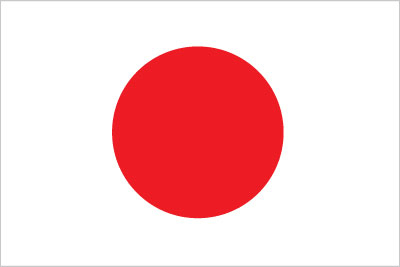
About the difference between Japanese and European instant miso soup
There are many people who eat Japanese food often when they were in Japan, but find it difficult to eat it overseas.
And among them, there are quite a few people who miss miso soup.
Sometimes it's difficult to make miso soup overseas because you don't have the time to make it yourself or you can't find all the ingredients.
Therefore, many people bring instant miso soup from Japan instead of making it themselves.
So, in this article, I wrote about my experience with instant miso soup, so I hope it will be helpful for those who are wondering whether to bring instant miso soup from Japan or looking for it locally.
I will explain the difference between Japanese and European instant miso soup
In fact, some overseas supermarkets sell miso and instant miso soup.
In most cases, the instant miso soup sold there is not made in Japan, and it tastes different from the Japanese ones.
From now on, I will explain what is the difference between these two, focusing on the impressions of actually trying them. (Please note that this is just my personal opinion)
About the difference in taste
Here, I will explain the instant miso soup that the author sold at a nearby supermarket as an example.

This is the instant miso soup that I actually purchased, and the price was around 4 euros for 4 pieces.
Compared to the price in Japan, it feels expensive.
The one I bought was tofu, but there are also wakame seaweed and kimchi.
By the way, kimchi is included in the lineup because it says PRODUCT OF KOREA, so it's probably because it's made in Korea.
Regarding the most important taste, to put it bluntly, there is a sense of incongruity and it does not suit Japanese tastes.
I don't recommend it unless you're really hungry for miso soup, or you don't care about the taste and just want to drink miso soup.
light taste
The reason is that the taste of miso is light in the first place.
When I put it in my mouth, it smelled and tasted like miso, but it wasn't miso I know.
I will explain the ingredients later, but this product was listed as kelp extract.
Of course, there is a possibility that kombu extract means kombu dashi, but it seems that extract and dashi are different in extraction method and ingredients, so it would be better to consider them separately.
If the kombu extract was mixed well with the miso, it would have tasted even better, but unfortunately, it felt like it was falling apart.
It even feels that the kelp extract has a stronger claim than the flavor of miso.
And the peculiar "instant ugliness" came out strongly.
There is a slight tingling sensation in the throat when drinking.
This feeling is not what many people are looking for in miso soup.
In conclusion, if you want to drink it, you can drink it, but it's not at the level where you go out of your way to drink it, and this discomfort makes 4 euros feel expensive.
Appearance and other impressions
If you look at this photo, you will immediately understand the impression of this instant miso soup other than the taste. (I put it in a mug because I don't have a bowl for soup locally)

My first impression was that the packaging was different.
The only thing that is the same is the light shade of miso soup.
First of all, tofu was in this state even though it was written as "tofu".
It looked like dregs such as soybeans in miso.
Wakame is relatively decent, but it will fall apart just by hitting your tongue.
It seems that the package does not contain anything that looks like a green onion.
Also, the reason why the color is light as a whole like the package is that it hardly melts even if you pour hot water on it.
Normally, just pouring hot water over it will loosen it a little, and if you stir it, it will mix well.
In the first place, the contents of miso soup will sink to the bottom if it is not touched for a while, but there was a problem before that.
I could see that it remained solid even when boiling water was poured over it, and it never melted even after mixing and mixing.
The above photo was taken at the moment when the flow almost stopped after stirring vigorously for a while, so it was about 10 seconds after I stopped stirring.
Unfortunately, the contents just spin around and sink when it stops.
Even if it sinks, the main body that fell apart is sinking.
So it doesn't look like miso soup.
As for the packaging, if you are a person like me who buys without looking at the product carefully, you may mistake it for instant tofu and buy it.
I bought it with the intention of adding instant tofu to my miso soup, but I can't deny my disappointment.
It's just that I'm not careful enough about this, but since only tofu is Japanese, if I didn't think about it, someone might make a similar mistake.
If you think you are not careful enough, please be careful when you see this series or similar type products.
Ingredients
I think some people are wondering what is included in this instant miso soup, so I will briefly introduce it.
Miso 57% (soybeans, wheat flour, wheat grains, umami seasoning E621, alcohol, koji), corn syrup, tofu 5% (water, soybeans), gochujang, kelp extract, onion, garlic, dried seaweed, umami seasoning E621, E635
The first thing I thought when I saw this was that the gochujang was the cause of the slight spiciness.
Perhaps this should be regarded as Korean-style miso soup.
lastly
This is my impression of the instant miso soup I bought overseas.
It is better to buy Japanese instant miso soup than to get this quality at this price locally. 
Undoubtedly, Japanese instant miso soup is generally rated higher.
If you don't have a Japanese grocery store in your neighborhood but you can't be satisfied with instant miso, or if you want to drink it every day and just bring in instant miso and you want to buy miso, then online shops are very convenient.
Our German-based online shop also carries soy sauce, mirin, and various Japanese food ingredients ranging from table-sized to commercial use, so please take a look.



























